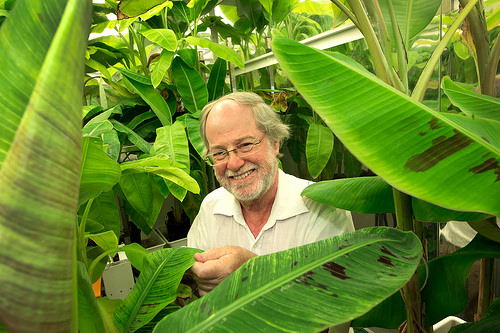Research at the Queensland University of Technology (QUT) has produced a golden-orange fleshed banana that is rich in pro-vitamin A.
The decade-long research, led by Distinguished Professor James Dale, involved extensive laboratory tests at QUT as well as field trials in north Queensland.
Professor Dale said the genetic modification process had resulted in the identification and selection of banana genes that could be used to enhance pro-vitamin A in banana fruit.
The research backed with close to US$10 million from the Bill & Melinda Gates Foundation and the UK Government’s Department for International Development, ultimately aims to improve the nutritional content of bananas in Uganda, where the fruit is the major staple food in their daily diet.
“The East African Highland cooking banana is an excellent source of starch. It is harvested green then chopped and steamed,” said Professor Dale.
“But it has low levels of micronutrients particularly pro-vitamin A and iron. The consequences of vitamin A deficiency are severe.”
He said it had been estimated that 650,000-700,000 children world-wide die from pro-vitamin A deficiency each year with a further several hundred thousand going blind.
“What we’ve done is take a gene from a banana that originated in Papua New Guinea and is naturally very high in pro-vitamin A but has small bunches, and inserted it into a Cavendish banana,” he said.
“Over the years, we’ve been able to develop a banana that has achieved excellent pro-vitamin A levels, hence the golden-orange rather than cream-colored flesh.
“These elite genes have been sent to Uganda in test tubes where they have been inserted into Ugandan bananas for field trials there.”
He said young Ugandan students, who came to QUT to undertake their studies, had now completed their PhDs and were overseeing the research and field trials in Uganda.
The research was published in Plant Biotechnology Journal.










